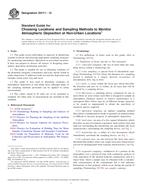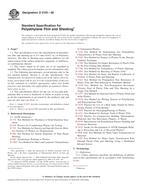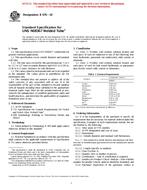1.1 This practice covers the broad concepts of sampling and analyzing waterborne oils for identification and comparison with suspected source oils. Detailed procedures are referenced in this practice. A general approach is given to aid the investigator in planning a program to solve the problem of chemical characterization and to determine the source of a waterborne oil sample.
1.2 This practice is applicable to all waterborne oils taken from water bodies, either natural or man-made, such as open oceans, estuaries or bays, lakes, rivers, smaller streams, canals; or from beaches, marshes, or banks lining or edging these water systems. Generally, the waterborne oils float on the surface of the waters or collect on the land surfaces adjoining the waters, but occasionally these oils, or portions, are emulsified or dissolved in the waters, or are incorporated into the sediments underlying the waters, or into the organisms living in the water or sediments.
1.3 This practice as presently written proposes the use of specific analytical techniques described in the referenced ASTM standards. As additional techniques for characterizing waterborne oils are developed and written up as test methods, this practice will be revised.
1.4 This standard does not purport to address all of the safety concerns, if any, associated with its use. It is the responsibility of the user of this standard to establish appropriate safety and health practices and determine the applicability of regulatory limitations prior to use.
Product Details
- Published:
- 07/10/1998
- Number of Pages:
- 3
- File Size:
- 1 file , 29 KB


